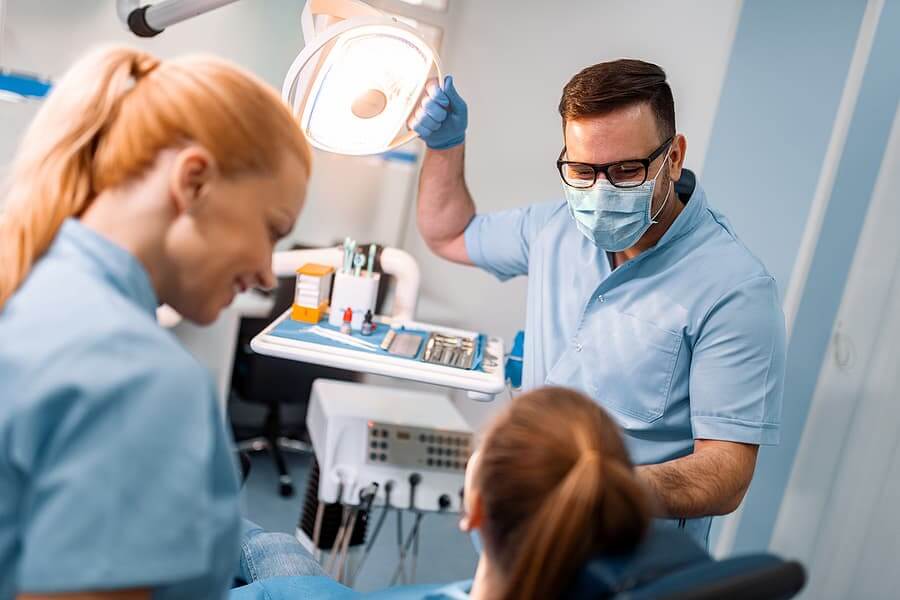
Regenerative Periodontal Surgery
In contrast to dental caries (tooth cavities) that cause direct damage to the tooth structure, periodontal disease damages the apparatus which anchors the tooth to the jawbone. In other words, people with the periodontal disease tend to lose “healthy” teeth, which never had a past need for treatments such as endodontics or a crown.
Regrettably, it is not always possible to treat periodontal disease by conservative means. Deep debridement of bacterial plaque and tartar from periodontal pockets and root surfaces and occasionally surgical intervention (gum surgery) are called for.
In the past, surgery had a dual objective: to provide direct access to the affected area (a periodontal pocket), allowing optimal cleaning of the surgical site, and additionally, to resect the gums and cratered bone in order to reduce pocket depths and create uniform osseous contours, as seen in the healthy situation.
Although such surgeries do indeed promote healing of the gums and aid in preserving teeth for a certain period of time, they usually tend, however, to yield a worse aesthetic appearance (elongated teeth with large interdental spaces).
At present, the result expected from periodontal surgery is the restoration of the previously lost tissues (regeneration), achieved by minimizing any further recession of the gumline (which had been virtually unavoidable in surgeries of the previous generation). To this end, the periodontal specialist currently has two options that have demonstrated equal effectiveness:
- Guided tissue regeneration of the dental attachment apparatus This treatment method includes the use of a special membrane that acts as a barrier between the cratered infrabony defect and the gums, thereby preventing the penetration of gum tissue cells into the defect and essentially “saving space” for the bone to grow into. There are various types of membranes, some being resorbable and others requiring removal. At present, resorbable membranes are preferred, usually, those which are composed of collagen (a protein that provides the scaffolding of the gum tissue).
- Use of a biologic chemical preparation containing proteins that are secreted during the genesis of the crown and root portions of the tooth (Emdogain®). This preparation has a gel-like consistency and is placed on the denuded root surface of the tooth after a gum flap has been elevated and the inflamed tissue removed. The proteins in the preparation adhere to the root surface and over the course of time migrate from it and promote induction of stem cells which transform into cells capable of rebuilding the tissues of the dental attachment apparatus.
In certain situations where there the bony defect is broad, the dentist may elect to use not only a membrane or a chemical preparation containing proteins but also a bone substitute (usually derived from human and animal sources) to fill the defect, in order to preserve space required for tissues of the attachment apparatus to be regenerated and to prevent soft tissue (gums) from collapsing into the defect.
In summary, numerous clinical studies on humans have provided a sound scientific base for the use of membranes and protein-containing preparations in regenerative periodontal surgery. Their role in the achievement of success in the regenerative process, in terms of attaining the desired outcomes, is unquestioned. It bears pointing out that specialized training and mastery of unique surgical techniques are required for rendering periodontal treatment and periodontal surgery in particular. Therefore, it is always recommended to seek consultation with a dentist who has received the appropriate training for specialization in the field of periodontics.
Dr. Evgeny Weinberg is a periodontist, certified by the ministry of health.
